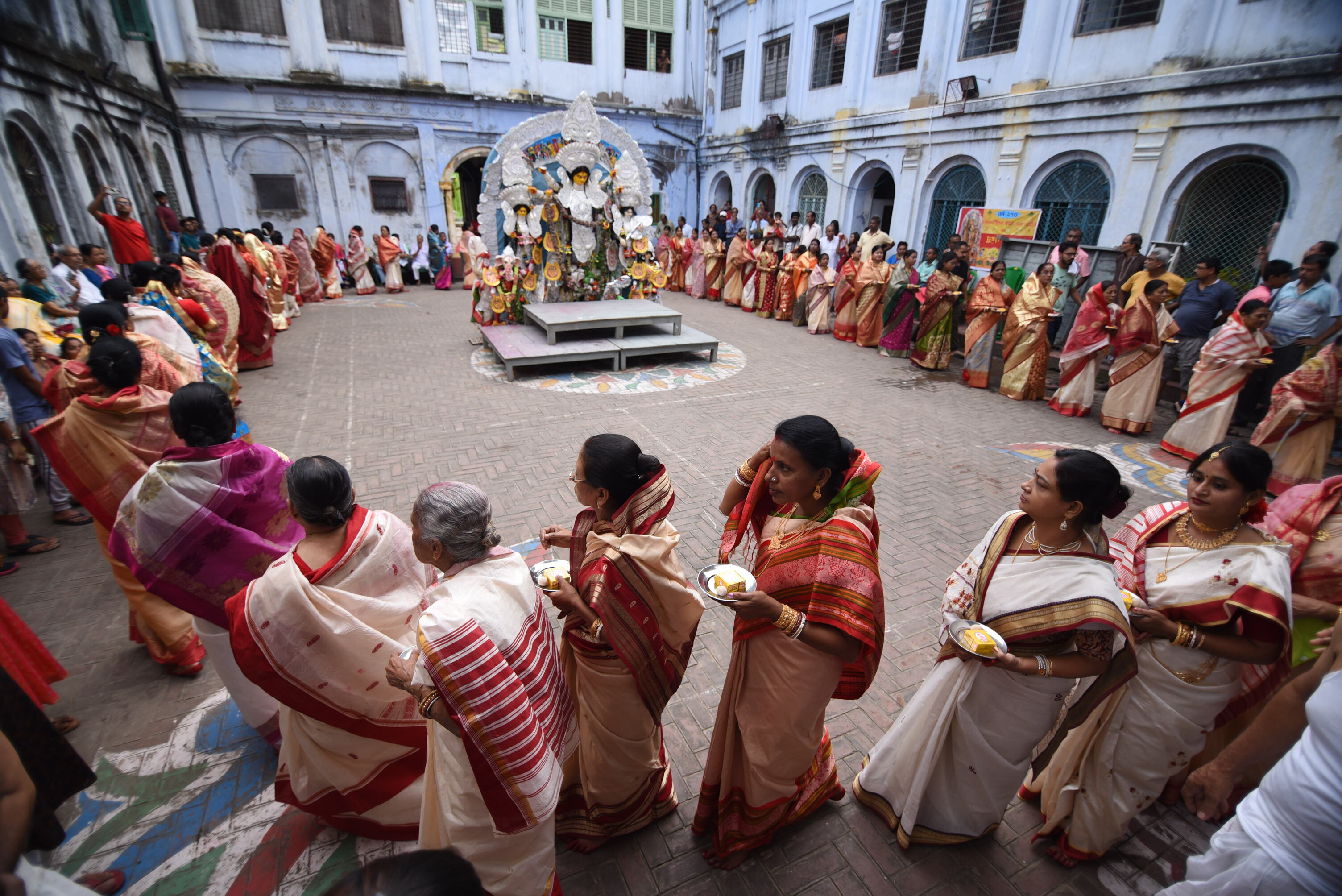1/ 5

2/ 5

3/ 5

4/ 5

5/ 5

❮
❯
Durga Puja
On a social, cultural, and artistic level, Durga Puja is perhaps unlike any other religious festival in India. The underlying idea is to celebrate the homecoming of the goddess Durga as she makes her annual visit to her parents’ home with her four children Saraswati, Lakshmi, Ganesh, and Kartik, but in practice, it is the biggest socio-cultural festival of Bengal, cutting across all barriers. I....
On a social, cultural, and artistic level, Durga Puja is perhaps unlike any other religious festival in India. The underlying idea is to celebrate the homecoming of the goddess Durga as she makes her annual visit to her parents’ home with her four children Saraswati, Lakshmi, Ganesh, and Kartik, but in practice, it is the biggest socio-cultural festival of Bengal, cutting across all barriers. It is indeed a cultural heritage that has only grown stronger with every passing year.According to most scholars, Durga Puja in Bengal dates back to the medieval era (at least 11th century AD), though Bengal broke with tradition by performing the ritual in Autumn, whereas it was originally meant for Spring. Apparently, the unseasonable ritual was begun by Lord Rama, hero of the Ramayana, when he performed the puja in Autumn as part of his war against the demon king Ravana. Initially the preserve of rich aristocratic families, Durga Puja in its present form probably began in Bengal in the 16th century, when renowned zamindar Raja Kangsanarayan organised a lavish festival at a cost of nearly Rs 8 lakh at Taherpur in Nadia district towards the end of the century.Other landed aristocrats followed in his footsteps. In 1606, a Puja was organised by Bhabananda Majumdar of Nadia, an ancestor of the celebrated Raja Krishnachandra Roy. Kolkata probably got its first Durga Puja in 1610, courtesy Laxmikanta Majumdar, the founder of the Sabarna Roy Chowdhury family. This family is inextricably linked to the founding of Kolkata, since it was from them that the British East India Company acquired the rights to three villages – Sutanuti, Gobindapur, and Kalikata – which went on to become the city of Calcutta, later Kolkata.
Read More
Activities
Durga Puja is the greatest festival of West Bengal wherein all religious and social barriers melt with one another. The festival celebrates victory of good over evil as based on mythology, Goddess Durga attained victory by killing demon king Mahishasura. It is commonly believed that the Goddess visits her earthly abode during this time to bless her devotees. Durga Puja holds great significance for the Bengali community.
Today, Durga Puja in Kolkata involves spectacular displays of creative fervour, thanks to the rise of ‘theme pujas’, where everything from the temporary pandal housing the goddess to the idols themselves adhere to a specific theme. Celebrated art designers, lighting experts and sculptors are often roped in to create the pandals, illuminations, and idols, with several organisations handing out awards for all aspects of the festival, from idol to environment-friendliness. For five days beginning with Sasthi and ending with Dashami, Kolkata comes to a standstill as millions of people throng the pandals in their colourful festive finery. The streets are crowded at all hours, and the city takes on the air of a joyful carnival, thanks to the hypnotic rhythms of the ‘dhaak’, a traditional Bengali drum.
Social Media
Organized By
Department of Tourism, Government of West Bengal
Thendhup N. Sherpa
New Secretariat Building, 1 KS Roy Road Kolkata
03322625975
wbtourismpublicity1[at]gmail[dot]com
How to reach
The nearest airport is Netaji Subhas Chandra Bose International Airport,
which is 15 KMs away.
The nearest convenient railway station is Howrah,
which is 4 KMs away.
The nearest major city is Kolkata,
which is 0KMs away.
